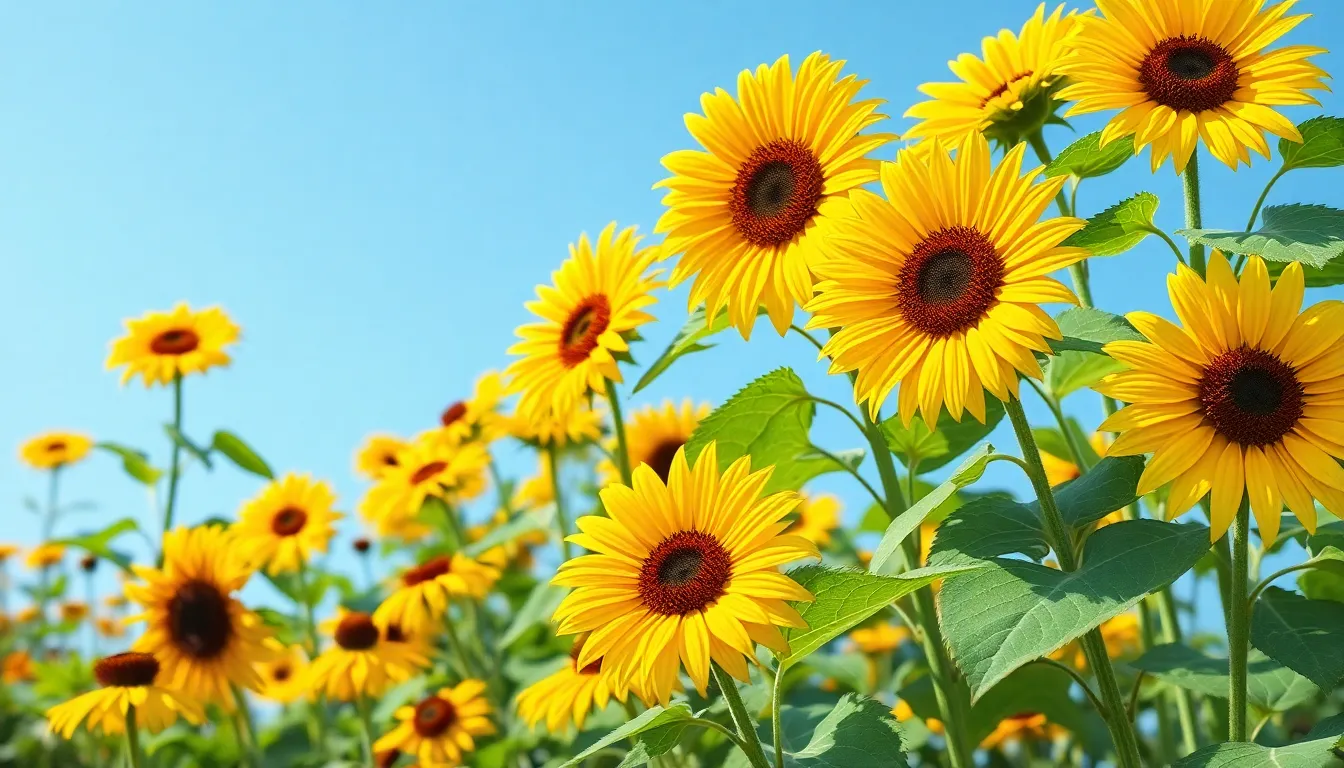Imagine stepping into a garden bursting with vibrant colors, and your eyes land on a dazzling display of yellow flowers. These sunny blooms can brighten anyone’s day, but identifying them can feel like a botanical game of hide-and-seek. Whether you’re a seasoned gardener or just someone trying to impress their friends with plant knowledge, knowing how to identify these cheerful yellow flowers can be a game changer.
Plant With Yellow Flowers Identification
Identifying plants with yellow flowers involves recognizing key traits of various species. Focus on leaf shapes, flower structures, and growth habits.
Examine leaves’ characteristics, as they often provide hints to a plant’s identity. For instance, broad leaves suggest sunflowers, while narrow leaves may indicate goldenrods.
Consider flower types; some species, like daisies, display a classic daisy structure with round, yellow petals. Others, such as black-eyed Susans, feature dark centers surrounded by yellow petals.
Assess growth habits, as different plants thrive in varied environments. Some yellow-flowered plants prefer sunny, dry areas, while others flourish in moist, shaded spots.
Familiarize yourself with local species, as certain yellow flowers appear more commonly in specific regions. Learning about local flora improves identification success.
Consult reliable field guides or mobile apps for accurate information and visuals. Utilizing these resources helps distinguish between similar plants, thus aiding in proper identification.
Observe blooming seasons, as many yellow flowers bloom in spring and summer. Timing recognition enhances the ability to identify specific flowers in a garden or natural habitat.
Overall, systematic observation and knowledge of key identifying features create a comprehensive approach for identifying plants with yellow flowers.
Common Characteristics of Yellow Flowering Plants

Recognizing yellow flowering plants involves focusing on certain key traits. Understanding these characteristics simplifies the identification process.
Leaf Shape and Arrangement
Leaves vary significantly among yellow flowering plants. Broad, ovate leaves might indicate sunflowers, while narrow, lanceolate leaves often suggest goldenrods. Some species, such as coreopsis, exhibit deeply lobed leaves. Additionally, the arrangement plays a role; alternate or whorled leaf patterns can help narrow down options. Observing leaf color also contributes to identification accuracy, as some yellow flowers feature a distinctive dark green hue.
Flower Structure and Growth Patterns
Flower structures differ widely among yellow flowering plants. Species like daisies display a classic shape with round, Ray flowers surrounding a central disc. Others, such as black-eyed Susans, feature prominent centers that contrast with yellow petals. Growth patterns also vary; some plants grow as annuals, completing their life cycle in one year, while others, like perennials, return season after season. Keeping these details in mind aids in recognizing specific flowers throughout blooming seasons.
Notable Plants With Yellow Flowers
Identifying notable plants with yellow flowers enhances gardening knowledge and appreciation. Several species stand out for their distinctive characteristics.
Sunflower (Helianthus)
Sunflowers display large, round yellow petals surrounding a prominent brown center. Known for their tall stature, they can grow up to 10 feet high. Leaves are broad and heart-shaped, providing essential clues for identification. Sunflowers thrive in full sun and well-drained soil. Their vibrant flowers attract bees and birds, marking them as popular garden choices.
Dandelion (Taraxacum)
Dandelions feature bright yellow flowers that form a round, puffball seed head upon maturation. Their leaves grow in a rosette pattern, often jagged and deeply lobed. Found in lawns and gardens, they enjoy disturbed soils. These plants are recognized for their quick growth and ability to spread easily. Dandelions also hold medicinal properties, used traditionally in herbal remedies.
Black-eyed Susan (Rudbeckia)
Black-eyed Susans are distinguished by their golden yellow petals and dark brown centers, resembling sunflowers in smaller form. This perennial plant reaches heights of 2 to 3 feet, blooming from mid-summer to fall. Leaves can be lance-shaped or ovate, often featuring a rough texture. Thriving in various soil types, black-eyed Susans attract butterflies and other pollinators. They serve well in borders and wildflower gardens.
Buttercup (Ranunculus)
Buttercups display glossy yellow flowers with a cup-like shape. These plants commonly grow in meadows and wetlands, thriving in moist soil. Their leaves are intricately divided, contributing to their unique identity. Buttercups can range from a few inches to over a foot tall. Some varieties are also known to be toxic if ingested, which is important to note when identifying them in the wild.
Tips for Identifying Yellow Flowering Plants
Identifying yellow flowering plants requires keen observation and familiarity with various characteristics. Certain strategies enhance recognition skills.
Observing Blooming Seasons
Understanding blooming seasons aids in plant identification. Different species display distinct flowering times, which can narrow down options. For instance, sunflowers typically bloom from mid-summer to fall, while dandelions often appear in early spring. Coreopsis may showcase flowers in late spring through summer, reflecting a varied timeline. Observers should note these timeframes when surveying gardens or natural areas.
Considering Regional Varieties
Familiarity with regional varieties supports accurate identification. Numerous yellow flowering plants thrive based on geographic locations. In the Midwest, black-eyed Susans flourish in gardens, while goldenrods dominate meadows. Coastal areas might feature sea thrift, known for its resilience. Local flora guides showcase specific species that commonly grow in respective regions, aiding gardeners in making informed identifications.
Conclusion
Identifying yellow flowering plants can be a rewarding experience for gardeners of all skill levels. By focusing on key traits like leaf shape flower structure and growth habits anyone can enhance their plant recognition skills.
With the right knowledge and keen observation it’s possible to appreciate the beauty and diversity of these vibrant blooms. Whether it’s the towering sunflower or the delicate buttercup each yellow flower adds a unique touch to any garden. Embracing this systematic approach to identification not only enriches gardening practices but also deepens the connection with nature.

